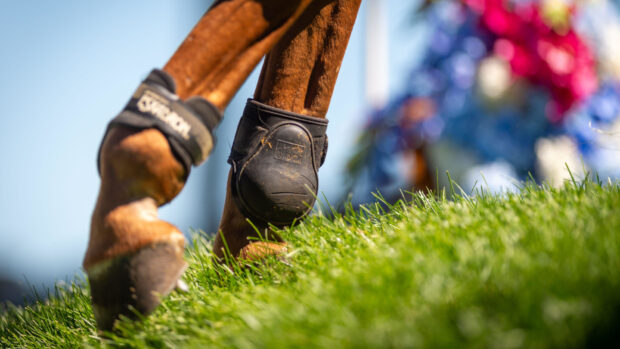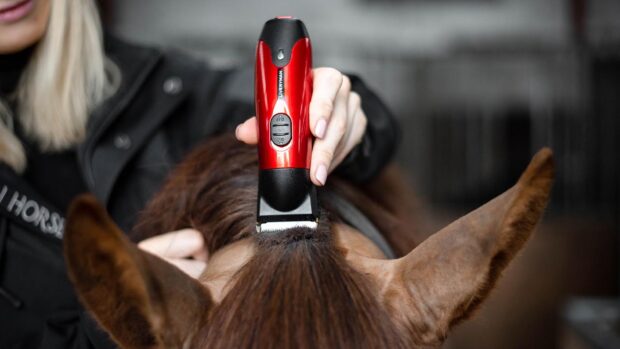Cleaning tack is admittedly not the most fun of jobs linked with riding horses, but it is necessary nonetheless. So, to help you do the best job possible in the most efficient way, here is our best advice on how to clean a saddle and bridle…
Use a damp cloth to sponge off mud and grease, then allow the leather to dry naturally before applying a good quality saddle soap. If the leather has become very wet it is a good idea to towel-dry it. Take care not to use too much water as wet leather will stretch, and the steel work and rivets inside the saddle could rust. Also, if leather is dried too quickly, by a radiator for example, it can get very hard. But it is also recommended that if your tack gets covered in wet mud, try to get the worst of it cleaned off it as soon as possible, for example, if you plan to drive home from a competition and then clean your tack.
Once leather is dry and cleaned, apply a leather conditioner. If the product disappears immediately, apply another layer. Then leave overnight and polish off the next day.
A handy tip is to use a cocktail stick to poke out dirt and product deposits from holes in the bridle pieces and stirrup leathers — but be careful not to enlarge the hole. A soft toothbrush is also useful for brushing away trapped dirt.
A build-up of dirt and grease can prove to be highly resistant to sponge and soap. One traditional method is to rub them with a ball of mane or tail hair, but you can also use the back of a blunt knife to carefully scrape it off without damaging the leather.
If you end up with mouldy leather, make sure you clean it outside to avoid spreading spores. Wipe off mould with a damp cloth, which should be soaked in boiling water with disinfectant if you plan to use it again, then treat the tack with a leather-specific mould inhibitor, and finally condition the leather. Check that stitching hasn’t rotted and that spores haven’t spread to other items. Fitting a low-wattage electric bar heater (wired safely) in the tack room will help prevent leather from going mouldy.
If you have synthetic tack, use a nailbrush to scrub leather-look saddles, before giving a final wipe over with a damp cloth.
If synthetic suede has become very wet, use a towel to mop up excess water, but do not rub, then leave the saddle to dry naturally. Once dry, use a soft brush to clean the suede — a water brush kept for the purpose is ideal.
Finally, the best way to keep tack as easy to clean as possible, is to clean it after every use — it might seem like hard work at the time, but it will make your life easier in the long run and keep the tack in the best possible condition, prolonging its life.
You might also be interested in:

8 bridles with flash nosebands that you might like in your tack room

Tack cleaners and conditioners that will bring shine to any tack room

A selection of the best stirrup leathers to complement your saddle
Looking for some new stirrup leathers? Here’s a selection of different types we think are worth a look at...

Subscribe to Horse & Hound magazine today – and enjoy unlimited website access all year round
Horse & Hound magazine, out every Thursday, is packed with all the latest news and reports, as well as interviews, specials, nostalgia, vet and training advice. Find how you can enjoy the magazine delivered to your door every week, plus options to upgrade your subscription to access our online service that brings you breaking news and reports as well as other benefits.




